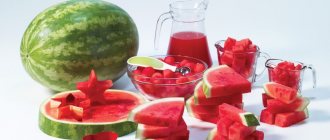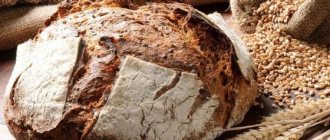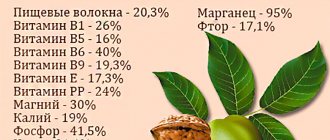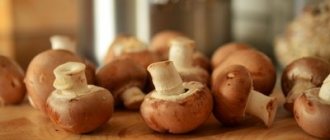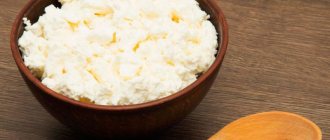Watermelon has been known since the times of Ancient Egypt, because the cultivation of the crop was in full swing. The melon crop was used not only as food, but also as a cosmetic product. To this day, it remains a mystery what it is - a fruit of the pumpkin family or a giant berry, the weight of which reaches several kg. Scientists claim that watermelons were left in the tombs of the pharaohs so that they would eat them while in the afterlife. The watermelon appeared in South Africa, where it is still found growing in the wild.
Europeans tasted the delicacy during the Crusades; for Russia, this plant was a rare sight on tables until the 19th century.
CALCULATORS FOR THOSE WHO WANT TO LOSE WEIGHT
Interesting facts from history
Content:
- Interesting facts from history
- And what kind of fruit are you?
- general characteristics
- The nutritional value
- Beneficial features
- Side effects
- How to choose a watermelon
- Medicinal use
- Watermelons in cooking
- Watermelons in cosmetology
Watermelons belong to the pumpkin family. They are grown in many tropical countries, where they are one of the main commercial fruit crops. The homeland of these delicious striped fruits is Southern Africa (Kalahari Desert). According to some assumptions - Brazil or Paraguay. It is there that wild varieties of crops grow in abundance. Over time, the plant spread to other continents.
The first written mention of harvesting watermelons appeared about 5,000 years ago. Egyptologists found this record among the hieroglyphs. The Egyptians grew watermelons in the Nile River Valley and then placed them in the burial tombs of kings. The fruits, according to the ancients, were supposed to nourish the deceased in the afterlife.
Thanks to traders, these pumpkins spread along the shores of the Mediterranean Sea. In the 10th century, they “migrated” to China, which today is one of the largest producers of watermelons. In the 13th century, the Moors brought the fruit to Europe. This fruit was probably brought to the United States by African slaves. And by the way, it was in the USA that the first cookbook containing a recipe for watermelon rind pickles was published. This happened in 1776. In 2005, residents of the American state of Arkansas entered the Guinness Book of Records because they grew the world's heaviest watermelon. His weight was 121.93 kg.
Proper nutrition, fasting days on watermelon with cottage cheese
A diet based on the consumption of watermelon and cottage cheese is not only tasty, but also healthy. Microelements and carbohydrates contained in watermelon will give you the necessary supply of energy, and cottage cheese will eliminate the possibility of stomach discomfort.
The basic rule of such nutrition is the separate consumption of foods. Cottage cheese and watermelon should be eaten separately and should never be combined. If you eat cottage cheese with watermelon, you can get severe discomfort and bloating.
Watermelon-curd food menu:
- Breakfast: involves eating 200 grams of pure, low-fat cottage cheese
- Lunch: Allows you to eat any amount of watermelon
- Lunch: also includes unlimited watermelon
- Afternoon snack: eat no more than 150 grams of cottage cheese
- Dinner: just watermelon
This diet should be maintained from one to five days, no more. The diet will allow you to lose from two to five kilograms.
watermelon-curd diet, rules of nutrition and weight loss
And what kind of fruit are you?
Probably, many of you have at least once wondered what category of products watermelon belongs to: is it a vegetable or a berry, or maybe a fruit? On the one hand, everything is simple: sweet means fruit. But on the other hand, these plants are very reminiscent of pumpkin, zucchini and other melons. And they seem to be vegetables... Well, how can you not get stupefied?
In fact, representatives of the pumpkin family, oddly enough, do not belong to vegetables. At least from a scientific point of view. This means that the circle of doubts is narrowing. It remains to be understood: a watermelon is a berry or a fruit. We won’t bore readers for long and will tell you the correct answer right away. Watermelon is a berry. Why berry? Because it fully corresponds to the “berry” features. It has a fruit with a hard skin, juicy pulp, a large number of seeds and develops from the ovary. By the way, from a botanical point of view, kiwis and tomatoes are also berries. But what’s interesting is that neither cherries nor raspberries belong to this group.
However, no matter what biologists call these fruits, the taste of watermelons does not change. For centuries, they have remained the main summer delicacy for many. Even if many do not even know which botanical category this plant belongs to.
Is watermelon harmful? How much sugar is in watermelon?
In addition to the enormous benefits that watermelon can have for humans, you should also know that it can be harmful to some categories of people. You should also be careful about the amount of watermelon you eat at one meal.
An unfair attitude towards growing watermelons allows a person not to receive the proper benefits from the fruit. This happens because a person deliberately introduces nitrates into the berry, which accelerate its ripening.
Who is harmed by watermelon?
- Nitrates accumulated in watermelon during the growing period are harmless in themselves. But if such substances enter the human body regularly, then it is quite possible that their concentration will provoke the development of cancer.
- Watermelon is contraindicated for those people who suffer from a number of diseases accompanied by poor urine flow
- Due to its laxative properties, watermelon is often contraindicated for those people who have a violation of the intestinal microflora, diarrhea and regular disorders, as well as colitis
- Watermelon should not be eaten by those who suffer from urolithiasis. Watermelon can have a strong diuretic effect because it contains a large amount of water and a minimal amount of alkalis. It is for this reason that it “cleanses” the kidneys, forcing them to flush out sand and dislodge stones. This process can give a person a lot of painful and unpleasant sensations.
- Eating watermelon in large and unlimited quantities is contraindicated for people who suffer from diabetes, as it can increase the amount of sugar in the blood. The percentage of sugar in watermelon is 90%
- All because of the same diuretic properties, watermelon should not be consumed by those people who have obvious problems with the outflow of urine
- watermelon is not recommended for consumption by those people who have problems with fluid retention in the body
- In some cases, watermelon may be strictly prohibited for consumption by people suffering from certain cardiovascular diseases
It is necessary to eat only healthy, ripe and healthy fruits that are not artificially grown. In case of watermelon poisoning, a person may feel the first symptoms after one to two hours. In case of watermelon poisoning, a number of antitoxic agents should be taken internally.
Tips for choosing a healthy watermelon. Which watermelon to choose:
- watermelon that is ripe at the right time of year to buy (August, September)
- watermelon weighing 5 kilograms, no more
- watermelon with a light yellowish side
- watermelon with a twisted dry tail
- watermelon with a hard and glossy rind
- watermelon that springs and “rings” when tapped
- watermelon that floats in the water
Signs of harmful watermelon:
- Watermelon pulp has a purple tint
- the inner fiber has a yellow tint rather than white
- redness of the water after lowering the piece into the liquid
Is watermelon harmful? How much sugar does it have?
general characteristics
Dark seeds against the background of a bright watermelon crumb. This is roughly how the majority of the world’s population imagines this fruit.
But not so long ago, scientists developed a, so to speak, sterile hybrid of the fruit that does not produce seeds.
Today there are about 1,200 varieties of this plant in the world, which are grown in more than 90 countries, including China, the USA, Greece, Hungary, Bulgaria, Russia, and Ukraine. Most often, about fifty types of watermelons end up on markets. The most popular: Astrakhan (aka Bykovsky), Kamyshin, monastery, Kherson.
A few weeks after planting, large yellow flowers appear on the plants, and after pollination, fruits develop in their place. The climbing stem usually reaches 3 meters. The color of the peel can be of a variety of shades and with a variety of patterns (depending on the variety). The color and taste of the crumb is also determined by the variety. It can be red, pink or yellow, and its texture is always crispy, which is why it differs from the creamy pulp of melons.
Rules for eating watermelon, is it possible to eat watermelon at night?
Surprisingly, such a sweet as watermelon is allowed to be eaten not only during the day, but also at night. The fact is that watermelon is very filling and one slice can fully satisfy your hunger.
Watermelon is easy to digest and will not slow down your digestive system and metabolism. Simply put, it will be quickly absorbed and allow the gastrointestinal tract to rest from the last meal.
In addition, watermelon will not affect weight gain in any way, as it contains a minimal amount of calories. The only disadvantage of eating watermelon in the evening and at night is the urge to urinate. Be prepared for the fact that you won't be able to sleep at night if you eat watermelon before bed.
The nutritional value
Watermelons are made up of water and carbohydrates.
They contain almost no protein or fat, and the number of calories is kept to a minimum. Almost 92 percent of the fruit's composition is liquid. Each bite of this sweet treat contains significant amounts of minerals, vitamins A, C and B, antioxidants, amino acids and phytonutrients. 100 grams of the product contain no more than 40 kilocalories, and watermelon seeds contain oil, the properties of which are similar to almond oil. Nutritional value per 100 g of product
| Calorie content | 25-40 Kcal |
| Water | 91-92 % |
| Squirrels | 0.6 g |
| Carbohydrates | 7.6 g |
| Fats | 0.2 g |
| Vitamin A | 28 mcg |
| Vitamin C | 8.1 mg |
| Vitamin E | 50 mcg |
| Vitamin K | 0.1 mcg |
| Vitamin B1 | 30 mcg |
| Vitamin B2 | 20 mcg |
| Vitamin B3 | 180 mcg |
| Vitamin B5 | 220 mcg |
| Vitamin B6 | 50 mcg |
| Folic acid | 3 mcg |
| Kholin | 4.1 mg |
| Calcium | 7 mg |
| Iron | 0.24 mg |
| Magnesium | 10 mg |
| Phosphorus | 11 mg |
| Potassium | 112 mg |
| Sodium | 1 mg |
| Zinc | 0.1 mg |
| Copper | 0.04 mg |
| Manganese | 0.04 mg |
| Selenium | 0.4 mcg |
Carbohydrates
The average carbohydrate content in 100 g of watermelon is approximately 7-7.5 g. These are mainly monosaccharides (fructose, glucose, sucrose). The glycemic index of this product is quite high - 72-80. However, given that watermelon contains relatively few carbohydrates per serving, consuming the fruit will not significantly affect your blood sugar levels.
Vitamins and minerals
These fruits are an excellent source of many other beneficial components:
- vitamin C (an antioxidant essential for healthy skin and immune health);
- potassium (a mineral important for regulating blood pressure and maintaining heart function);
- copper (important for hair);
- vitamin B5 (like other B vitamins, important for the nervous system);
- vitamin A (presented in watermelons in the form of beta-carotene, essential for healthy eyes, skin, and hair).
Lycopene
Scientists have noticed that watermelons contain high levels of lycopene: 15-20 mg per 200 g of product, which is almost one and a half times more than tomatoes. Lycopene is a phytonutrient found in plant foods that has beneficial effects on the human body. This substance is also a natural carotenoid pigment responsible for the red color of watermelons, tomatoes, guavas and red grapefruits.
Lycopene is believed to be beneficial for the heart, bones, and also serves as a preventive substance against prostate cancer. In addition, it is also a powerful antioxidant with anti-inflammatory properties.
To get the maximum amount of lycopene, it is important to allow the fruit to ripen well. The redder the watermelon crumb, the more beneficial substances it contains. As the fruit ripens, the amount of beta-carotene also increases.
Citrulline
Another beneficial phytonutrient found in watermelon is citrulline. By the way, watermelon is the richest food source of this amino acid. Most of the substance is contained in the white rind surrounding the watermelon crumb.
Once in the body, citrulline is converted into another amino acid - arginine. Both substances play an important role in the synthesis of nitric oxide, which helps reduce blood pressure, relax and dilate blood vessels. Citrulline improves blood flow and has a positive effect on the functioning of the heart muscle. It is believed that citrulline can improve erectile function in men. But to achieve a Viagra-like effect, you will have to eat a lot of fruit. It is also known that arginine is important for the proper functioning of the lungs, kidneys, liver, reproductive system, and promotes wound healing.
But despite the fact that watermelon is one of the best sources of citrulline, to obtain the daily requirement of the substance you would have to eat more than 2 kg of berries.
Watermelon calorie content per 100 grams, what is the calorie content of watermelon?
Few people know that watermelon comes from distant and hot Africa. Even in Ancient Egypt, this berry was of great importance to people and was placed in the sarcophagi of the pharaohs for food in their afterlife.
In our area, this berry appeared thanks to the Crusades, and for a very long time it was considered a delicacy, a delicacy and a rare food.
In the modern world, buying a watermelon is not at all difficult, even out of season. Juicy berries are delivered from all parts of the globe in winter and summer. Of course, watermelon has the richest taste if it has grown and ripened in favorable summer conditions, and not in greenhouses.
Some people call watermelon a berry, because its structure corresponds to all the biological properties of the berry. Some consider it a vegetable because it grows in the garden, and others call it a fruit for the sweetness of its pulp. In any case, watermelon belongs to the melon family and is a close relative of pumpkin.
Juicy, tender, sweet watermelon pulp gives great pleasure to those who eat it in the heat. Despite the fact that this fruit is very nutritious, it is low in calories and therefore is included in various diets and is allowed to be eaten by those losing weight. It is important to know about the calorie content of the freshest watermelon and all its derivative products:
| Name | Calorie content per 100 grams |
| Fresh watermelon | 25 kcal |
| Watermelon juice | 38 kcal |
| Canned watermelon | 37 kcal |
| Candied watermelon rind | 209 kcal |
| Watermelon sorbet | 82 kcal |
Calorie content of fresh watermelon and watermelon derivatives
Beneficial features
There is nothing strange in the fact that a fruit with such a unique chemical composition has a wide range of effects on the body. Here are just some of the beneficial properties of watermelons.
- Heart and blood pressure.
Lycopene, citrulline and arginine contained in watermelons reduce the risk of developing cardiac diseases, improve blood flow and effectively regulate blood pressure in obese people. In addition, potassium and magnesium, which are also found in significant quantities in watermelons, have a positive effect on blood vessels and the heart.
- Anti-inflammatory properties.
Watermelons fall into the category of “anti-inflammatory fruits” due to the presence of lycopene in their composition. This substance is an inhibitor for various inflammatory processes, and also works in the body as an antioxidant, neutralizing free radicals. Watermelons also contain choline, which is known to be useful for treating chronic inflammation. In particular, this substance makes the berries beneficial for people with arthritis.
Working together, all these substances strengthen the immune system, thereby improving overall well-being.
- Hydration.
Watermelons are a great example of a food that will help restore water balance in the body. They are not only maximally saturated with water, but also contain useful electrolytes. Together, this helps prevent heat stroke. For this purpose, in tropical countries, many people eat this fruit every day throughout the summer.
- Digestion.
The fiber that watermelon is made of has a beneficial effect on the gastrointestinal tract and also helps maintain normal weight.
- Skin and hair.
Vitamin A is a substance without which skin and hair cannot look beautiful. And it’s worth noting that just a 100-gram slice of watermelon contains almost a quarter of the recommended daily intake of this vitamin. In addition, the fruits are rich in ascorbic acid, which promotes the production of collagen and elastin, necessary for the healthy growth of epidermal cells.
- Benefits for bodybuilders.
Research conducted in 2013 showed that watermelon juice is essential for athletes. It turned out that in order to reduce muscle pain after intense training, it is enough to drink about 500 ml of juice 1 hour before exercise. Scientists are still at a loss as to what could cause this effect. But there is an assumption that this is the “work” of the amino acids citrulline and arginine, which are found in high concentrations in watermelons.
- Cancer prevention.
Like many fruits and vegetables, watermelon belongs to the anti-cancer food group. Not least due to its antioxidant properties. In particular, experiments have shown that lycopene prevents the proliferation of prostate cancer cells and reduces the risk of breast, intestinal, and lung cancer.
- Insulin resistance.
Insulin is an important hormone in the human body, which directly affects the level of sugar in the bloodstream. Insulin resistance is a condition in which the gland produces insulin, but the cells are resistant to its effects. This condition can lead to type 2 diabetes. Watermelon juice, according to some studies, can reduce the level of resistance, thereby preventing the risk of “sugar disease”.
- Kidneys.
The spectrum of beneficial substances that form the chemical composition of watermelons includes potassium, which is very useful for removing toxic deposits in the kidneys. In addition, this element is useful in reducing the concentration of urea in the bloodstream, which in turn reduces the risk of kidney damage and the formation of kidney stones.
Among other things, do not forget that watermelons are more than 90 percent water. Therefore, they are an excellent diuretic, which is also good for cleansing the kidneys.
- Vision.
You don't have to worry about your eye health if you have watermelons in your diet. This fruit, rich in beta-carotene, vitamin C, and lutein, has an excellent effect on vision. The listed components protect against drying out of the mucous membrane of the eyes, the development of glaucoma and cataracts.
Benefits of seeds
The seeds have high nutritional value due to their high protein content. Amino acids (lysine, arginine, tryptophan) promote muscle growth and increase stress resistance. Niacin makes your skin healthier. Watermelon seeds reduce the risk of developing urolithiasis and improve vision.
The seeds can be dried or fried, this will not reduce their beneficial properties.
Watermelon seeds should not be consumed if you have citrullinemia (a condition in which the substance that releases ammonia into the urine is not produced). When consuming seeds in this case, ammonia will be retained in the body, which can lead to poisoning.
Watermelon seeds are considered very beneficial for men's health. They serve to prevent the formation of prostate adenoma, increase testosterone synthesis, which has a positive effect on the entire body.
Side effects
If watermelons are consumed in reasonable quantities, these fruits will not cause side effects. Meanwhile, it is important to know that these fruits contain potassium and lycopene, an overdose of which is extremely undesirable.
Consumption of more than 30 mg of lycopene per day may cause nausea, diarrhea, stomach upset and bloating. An allergy to watermelons can manifest as itching in the mouth and throat, swelling of the mouth and throat, and sometimes of the ears. People with hyperkalemia should also carefully consume watermelon, which contains 112 to 140 mg of potassium per 100 grams. An overdose in such cases is fraught with arrhythmia and other cardiac problems and muscle dysfunction.
Diet and watermelon
There is an opinion that watermelon is suitable for a diet, but this is not entirely true. Despite the willpower, when you consume only watermelon during the day, as well as the strong feeling of hunger that the product causes, insulin will begin to be produced, which will reduce glucose levels. The feeling of hunger will therefore increase, and it will not be easy to cope with such a diet, because the glycemic index is high, and the composition of the fruit is simple, but not high in calories.
Watermelon can be used for weight loss, but there may be some difficulties associated with a sense of proportion. On average, 1.5-2 kg per day is acceptable for the average person.
How to choose a watermelon
Before getting down to practical advice on choosing the most delicious berry, it is important to say that in our latitudes, ripe watermelons appear no earlier than the end of July, and the peak of fruiting is mid-August.
A ripe watermelon can be recognized by:
- a dull hum when you pat it with your palm;
- crunching when lightly squeezed;
- marks that remain if you run your fingernail over the peel;
- sweet taste (red color is not a guarantee of ripeness).
Not the best choice is:
- cracked or cut fruit;
- too big or too small (usually overripe or underripe);
- fruits with a large white spot (indicating immaturity);
- sold along roads (watermelons intensively absorb toxic substances from the air);
- berries with yellow fibers in the pulp (this is a sign of an excessive amount of nitrates; in “proper” fruits the fibers are white);
- watermelons, the pulp of which colors the water (this indicates the use of artificial dyes to give the pulp a red color);
- fruits with a sour odor (cause poisoning).
And a few more important notes. Nitrates are mainly concentrated in the peel of the berry and in its crumb near the peel (the closer to the peel, the higher the value). It is advisable to eat the cut fruit within 3 hours. You shouldn’t even store “opened” berries in the refrigerator for longer (the pulp of watermelons is an ideal environment for the proliferation of microbes). In addition, the concentration of nutrients in chilled (or frozen) berries is significantly reduced.
Contraindications and possible harm
Watermelon should be consumed with caution for the following diseases:
- Urolithiasis (the berry provokes the movement of stones).
- Diabetes mellitus type 2. This pathology is not an absolute contraindication. Before use, it is recommended to consult a doctor who will calculate the permitted portion.
- Allergic reaction.
- Colitis.
- Diarrhea.
Watermelon can cause harm to the body if it contains large amounts of nitrates. They are used to quickly ripen and increase fruit weight. Consumption of nitrate fruits leads to serious poisoning. Symptoms of this condition are weakness, dizziness, nausea, fever, vomiting, and diarrhea. It is especially dangerous in childhood.
The glossy surface of the watermelon, the bright red color of the pulp, and the yellow fibers inside indicate the presence of a large amount of chemical nitrates.
It is not recommended to purchase cracked or cut watermelons, since in this case there is a high risk of dangerous bacteria getting inside.
Application for weight loss
Due to its taste and availability, watermelon has gained a large number of fans around the world as a means of losing weight. Rave reviews from girls and women who have painlessly lost several extra pounds confirm the effectiveness of the watermelon diet. If you get out of it correctly and then follow the principles of a healthy diet, you can consolidate the results for a long time.
In order to cleanse the body and correct body weight, fasting days are spent on fruit pulp, which involves drinking watermelons and water in an amount of 2-3 liters. Despite the fact that the berry itself is juicy, free liquid is necessary to normalize the water-salt balance and to activate the process of removing waste and toxins from the body resulting from the decomposition of fatty deposits.
One- and two-day fasting diets are usually . Their frequency varies widely, but the most optimal frequency of fasting days is once every 7-10 days.
A more strict version of the diet is designed for five days and includes only permitted watermelon pulp in the amount of 1 kg per 10 kg of body weight + 2 liters of still purified water. This option for losing weight is unbalanced; the body experiences a deficiency of calories and other essential micro- and macroelements, vitamins, and is difficult to tolerate.
Negative consequences are possible in the form of rapid weight restoration and slower metabolism. Only people who do not have gastrointestinal diseases can practice this method of weight loss.
It is more rational to carry out a ten-day gentle watermelon diet , in the menu of which the pulp of fresh ripe watermelons is supplemented with water and unsweetened green tea, whole grain, rye or bran bread. The maximum result that can be achieved is minus 10 kg. The average figures vary between 5-7 kg.
During the diet, pasta, alcohol, energy drinks, bread, sugar-containing foods, snacks, and snacks are completely excluded . To consolidate the results, it is important to consume low-calorie dairy products, cheese, lean salads and vegetable soups, lean meats and fish for a few more weeks after completing the diet.
Afterwards, watermelon pulp is included in the diet at the rate of 1 kg per 30 kg of human body weight.
Chemical composition of watermelon
The composition of watermelon is 91% water, and the remaining percentages are amino acids, carbohydrates, pectin, ash, and alkaline substances.
Minerals included: calcium; potassium; magnesium; sodium; phosphorus; selenium; copper; manganese; iron; fluorine; zinc. Watermelons contain lycopene, beta-carotene, B vitamins (thiamine, riboflavin, folate, pyridoxine, choline), ascorbic and nicotinic acids, alpha-tocopherol acetate (vitamin E), phylloquinone (vitamin K), betaine.
Popular articles for weight loss and health
Chia pudding: recipe with coconut milk
Diet 5 spoons: menu for the week real reviews
Homemade granola diet recipe
One Glass Diet
Mineral composition of the fruit
Many beneficial properties of watermelon pulp are due to its composition - more precisely, the vitamins and microelements it contains.
Watermelons are rich in:
- B vitamins, which strengthen the nervous system and have a beneficial effect on the skin;
- vitamin C, which strengthens the human body’s defenses;
- vitamin PP, necessary for good health and the fight against insomnia;
- folic acid, which is needed by the body of every pregnant woman and nursing mother.
- In addition to vitamins, watermelons contain an impressive range of macroelements, microelements and minerals:
- iron;
- potassium;
- calcium;
- magnesium;
- manganese;
- copper;
- sodium;
- selenium;
- phosphorus;
- fluorine.
All of them stand guard over our health.
Did you know that eating watermelon can make you gain weight?
“It has been confirmed that the calorie content of watermelon per 100 grams is only 25-38 kcal. This is a one-of-a-kind sweetness that will never lead to completeness...”
Do you believe this? Then, when you see increased numbers on the scales, look for other options that provoked the sad fact.
For now, we’ll tell you how a low-calorie watermelon “dessert” gives an unexpected increase in kilogram equivalent:
Together with a loaf of white bread, rapid weight gain is guaranteed. A cool option for bodybuilders (they use it often). For those who want to have a slender silhouette, scarlet pulp in combination with flour products is “killer”!
Watermelon does not satisfy hunger; its glycemic index is very high - your appetite will definitely increase within an hour after eating the berry. It is important to refrain from indiscriminate consumption of fatty and protein foods.
It’s easy to finish a whole green striped “ball” in one sitting. But the arithmetic of “sugar pleasure” will give a disappointing result. 38 kcal is a small piece; a ripe watermelon itself weighs on average 6 kg. Multiply and calculate the total calorie content of the berry - 2280 kcal (this is the optimal amount of all calories consumed per day). You're not limited to just watermelon, are you? The counter is creeping up along with the kilograms!
How to avoid getting caught up in this weight gain trend?
Practice watermelon fasting days without mixing the juicy pulp with other food. There will be a cleansing of toxins with excellent absorption of useful elements, of which watermelon is rich. Limit salt in your diet, then avoid swelling in the morning.
This berry should act as a snack, and not as an addition to the main table menu. Keep an interval of 1.5-2 hours before and after main meals - this is the best time for a treat.
Add variety to any boring diet when hunger overcomes and eating something substantial is prohibited. The life-giving moisture of watermelon depths will give you a feeling of satiety and sweetness. Maybe not for long, but still. You will become more positive, the motivation to lose weight will not disappear!
